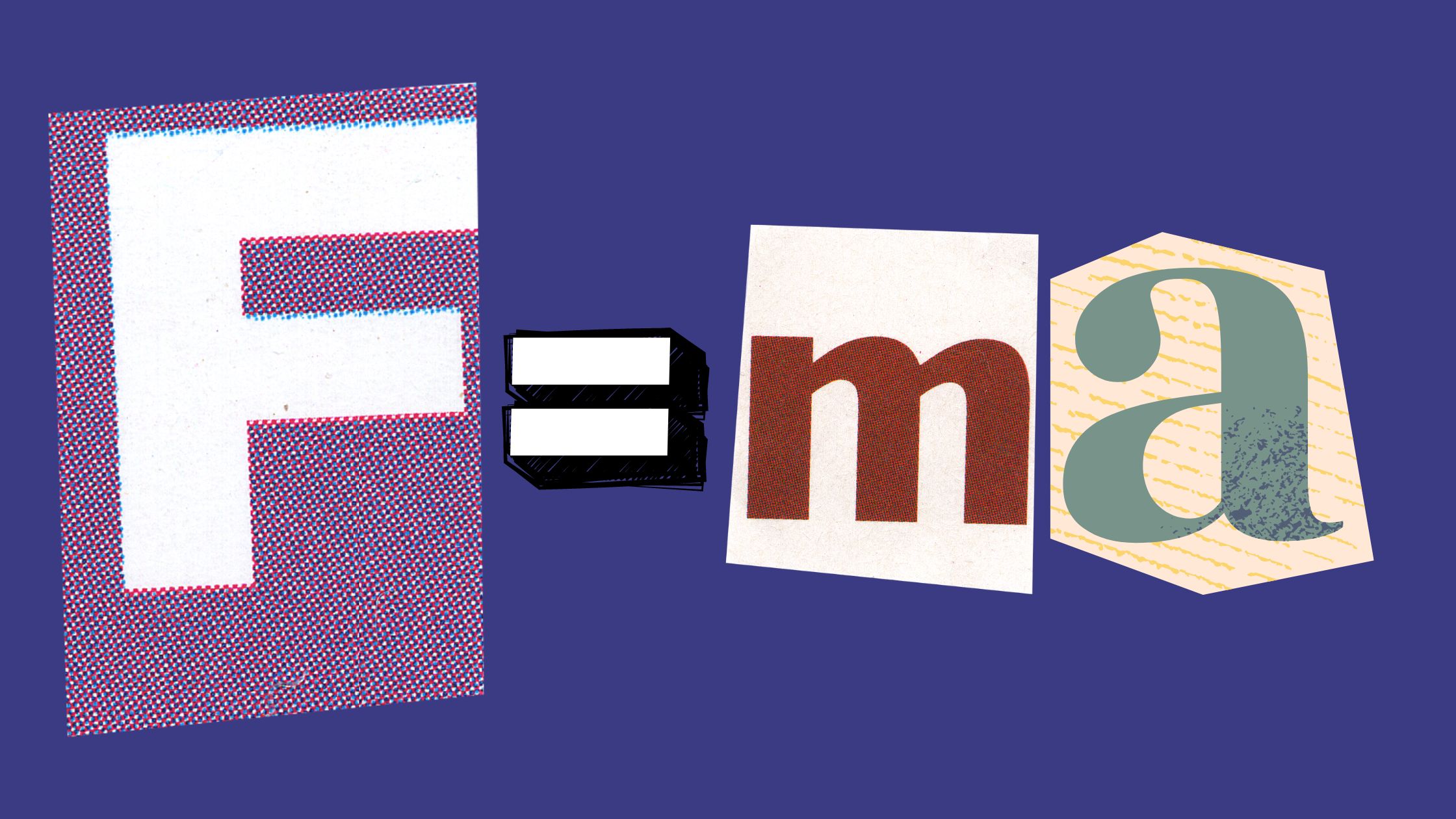
Newton's Second Law of Motion: The Relationship Between Force, Mass, and Acceleration
Newton's second law of motion explains how force, mass, and acceleration are connected. It can be summed up in two ways:
Formal Way: The acceleration of an object depends on the net force acting on it and its mass. The direction of the acceleration is the same as the direction of the net force.
Equation: F = ma (where F is the net force, m is mass, and a is acceleration)
Key Concepts:
Net Force: This is the total force acting on an object. If there's only one force, the net force is just that force. If there are multiple forces, you add them up to find the net force.
Mass: Mass is how much stuff is in an object. A heavier object (with more mass) is harder to move and needs more force to accelerate compared to a lighter object.
Acceleration: Acceleration is how quickly an object speeds up, slows down, or changes direction. The bigger the force acting on an object, the more it will accelerate. The direction of acceleration is the same as the direction of the force.
In Simple Terms:
This law means that how fast an object speeds up or slows down depends on two things: the strength of the force acting on it and the object's mass.
Examples:
- If you push a toy car (which has a small mass) with a strong force, it will speed up quickly.
- If you push a heavy wagon (which has a large mass) with the same force, it won't speed up as quickly.
So, Newton's second law tells us that a stronger force or a lighter object will result in faster acceleration!
🎉 Ready to turn your knowledge into cash? Dive into our fun and rewarding quizzes! REGISTER ON HAMROQUIZ TODAY 🎉
